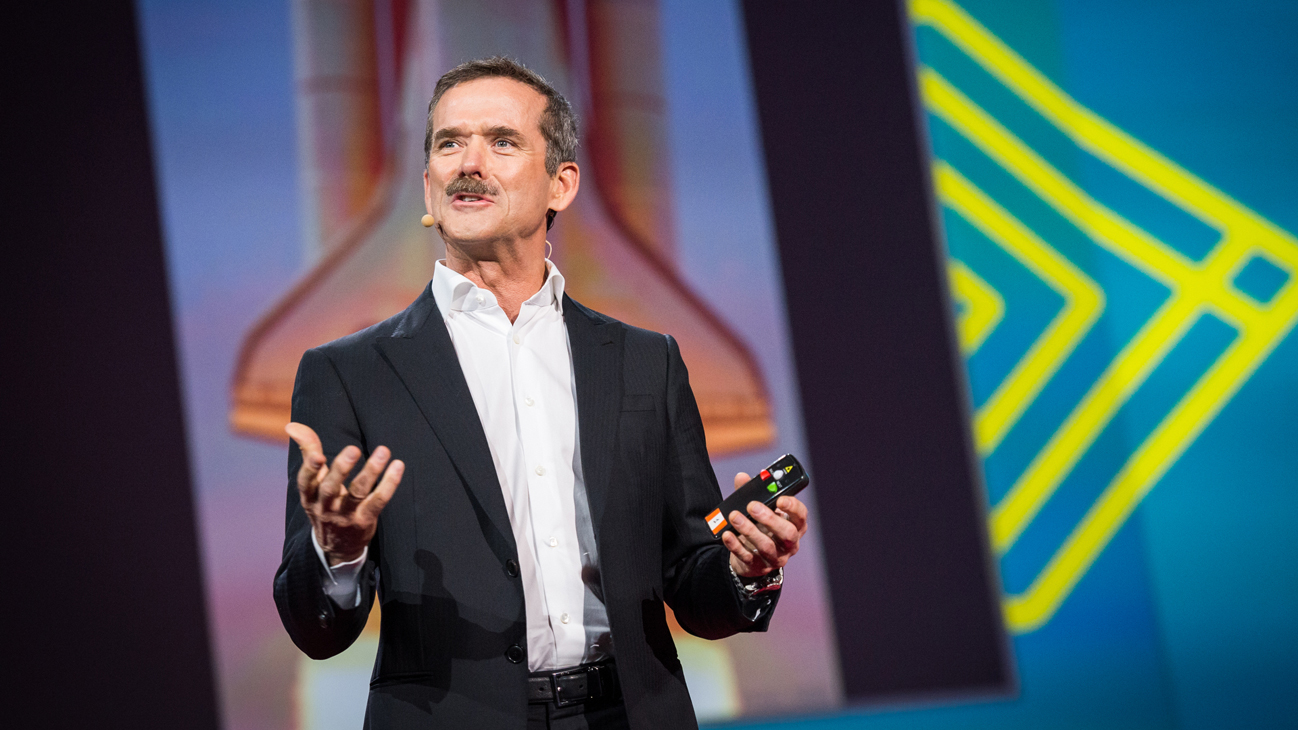“Good morning, Earth!” That is how Colonel Chris Hadfield—writing on Twitter—woke up the world every day while living for five months aboard the International Space Station. Through his 21-years as an astronaut, three spaceflights, and 2600 orbits of Earth, Colonel Hadfield has become a worldwide sensation, harnessing the power of social media to make outer space accessible to millions and infusing a sense of wonder into our collective consciousness not felt since humanity first walked on the Moon. Called “the most famous astronaut since Neil Armstrong,” Colonel Hadfield continues to bring the marvels of science and space travel to everyone he encounters. Inc.com looks at what it takes to create a great presentation, and references Colonel Hadfield’s famous TED Talk, What I Learned From Going Blind In Space, as a great example of a speaker who uses images to complement a presentation:
In the time it takes the average person to read this article, Instagram users will have uploaded 140,000 photos. Facebook users are uploading 300 million photographs every day. Why, then, is the average PowerPoint presentation full of text and bullet points?
“Bullets belong in The Godfather. Avoid them at all costs,” writes TED curator Chris Anderson in his book, TED Talks. “Photographs, illustrations, elegant typography, graphs, infographics, animation, video–all can dial up both the explanatory power of a talk and its aesthetic appeal.”
If the goal of your presentation is to change minds, bullet points on a slide won’t accomplish your mission. The brain cannot listen to a speaker, read a slide, and concentrate on both at the same time.
Pictures Really Are Superior
Neuroscientists who study persuasion have a mountain of evidence to show that concepts presented as pictures instead of words are more likely to be recalled. It’s called the Picture Superiority Effect.
It works like this: If you hear information delivered verbally, you are likely to remember about 10 percent of that information three days later. Add a picture, however, and your recall rate will soar to 65 percent. Put simply, visuals matter–a lot.
“Human PSE is truly Olympian,” writes molecular biologist John Medina in Brain Rules. “Tests performed years ago showed that people could remember 2,500 pictures with at least 90 percent accuracy several days post-exposure, even though the subjects saw each picture for about 10 seconds.
I was in Dubai recently to speak at an international book festival. I had big shoes to fill. Many people were raving about a speaker who had attended the previous year. They said his presentation was one of the best ever. It didn’t surprise me when I learned the speaker’s name: Chris Hadfield, the ‘singing astronaut.’
Hadfield served as the commander of the International Space Station and became the first Canadian astronaut to walk in space. You might remember Hadfield from social media. He picked up a guitar as he floating weightless and sang David Bowie’s “Space Oddity.” The video went viral and made him Hadfield a social media sensation.
Hadfield’s TED Talk–What I Learned From Going Blind In Space–received a rare standing ovation. Hadfield told the story of the time his eyes slammed shut in the middle of a space walk. The spaceship was traveling around the world at five miles per second, but Hadfield didn’t panic. He had trained for every situation. The presentation offered lessons in overcoming one’s fears. It was also an astonishing display of visual storytelling and picture superiority.
Hadfield’s presentation contained 35 slides, all photos and videos. “I’m a big believer in the power of a compelling visual,” Hadfield told me. “A really good visual isn’t just beautiful; it makes you think.”
Many of the photos were personal. For example, Hadfield was inspired to be an astronaut from an early age. He showed photos of himself at the age of nine, sitting in a cardboard box he imagined as his first rocket.
In another example, Hadfield describes what it feels like to hit the ground in a landing craft in the middle of Kazakhstan. The accompanying slide shows international space officials helping Hadfield out of the landing craft. There were no bullet points in Hadfield’s 16-minute presentation.
Our Brains Encode Photos More Robustly
Our brains are wired to process visual information in the form of pictures very differently than text. Scientists call the effect “multimodal learning:”
Pictures are processed in several channels instead of one, giving the brain a far deeper and meaningful encoding experience. Words are encoded verbally. If I ask you to remember the word dog, your brain will register it as a verbal code. If I show you a picture of a dog and ask you to remember the word, dog, the concept will be recorded visually and verbally, making it easier to recall later.
In your next presentation, take a lesson from the most popular TED Talks of our time and lose the bullet points. If you walk into a room and deliver a presentation that combines some text, one or two short videos, and a lot of pictures, you will stand out from the majority of average, dull presentations that are delivered millions of times a day.
A picture really does say a thousand words, so let your photos do the talking.

